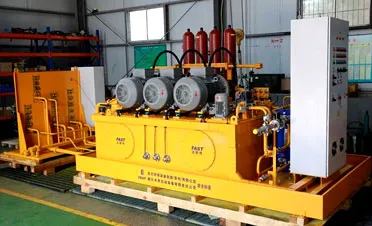Brass Stamping Components for Precision Manufacturing and Custom Solutions
Brass Stamping Parts An Essential Component in Modern Manufacturing
Brass stamping parts play a vital role in various industries, including automotive, electronics, and plumbing. The process of brass stamping involves shaping brass sheets into precise parts, a method that has gained prominence due to its efficiency and cost-effectiveness. In this article, we will explore the manufacturing process, advantages, applications, and the future of brass stamping parts.
The Manufacturing Process
The manufacturing of brass stamping parts starts with the selection of high-quality brass sheets. Brass, an alloy of copper and zinc, is favored for its excellent malleability and corrosion resistance. The stamping process typically involves several steps design, tool preparation, stamping, and finishing.
1. Design The initial step is to create a detailed design of the needed part. This can be done using computer-aided design (CAD) software, which allows engineers to visualize the part and make necessary adjustments before production.
2. Tool Preparation Once the design is finalized, tools and dies must be prepared. These tools are crafted to the specifications of the designs and are crucial for achieving the desired shape and precision in the parts. The precision of these tools directly impacts the quality of the final product.
3. Stamping The next step is the actual stamping process. The prepared brass sheets are placed in a stamping machine, where the tools exert pressure to cut and shape the metal into the desired form. This process can be done in a single stroke or multiple strokes, depending on the complexity of the part.
4. Finishing After stamping, the parts may require additional finishing processes, such as cleaning, deburring, and surface treatment. These processes enhance the durability and appearance of the brass parts, ensuring they meet industry standards.
Advantages of Brass Stamping Parts
The use of brass stamping parts offers several advantages, making them a popular choice among manufacturers.
1. Cost-Effectiveness Stamping is an efficient process that allows for high-volume production. Once the tools are created, parts can be produced quickly and consistently, reducing labor and material costs.
2. Precision and Repeatability Stamped parts are known for their high precision and repeatability. With advanced tooling and machinery, manufacturers can produce thousands of identical components with minimal variation, which is crucial for industries that require tight tolerances.
brass stamping parts

3. Customization Brass stamping can accommodate complex shapes and designs, allowing manufacturers to create customized parts tailored to specific applications. This flexibility is particularly valuable in industries where unique specifications are necessary.
4. Durability Brass, being resistant to corrosion and wear, ensures that stamped parts have a long service life. This durability makes brass parts suitable for demanding environments, such as automotive and aerospace applications.
Applications of Brass Stamping Parts
Brass stamping parts find applications in a plethora of industries due to their versatility. Some common applications include
- Automotive Industry Components such as connectors, terminals, and brackets are frequently manufactured using brass stamping. These parts often require high conductivity and strength to ensure reliability.
- Electronics Brass is widely used in electronic devices for connectors and switch components because of its excellent electrical conductivity and resistance to corrosion.
- Plumbing Brass fittings and valves are essential in plumbing systems, and stamping helps produce these products efficiently while maintaining the necessary quality standards.
- Aerospace Given the stringent requirements of the aerospace industry, brass stamping parts are used in components where lightweight and high strength are essential.
The Future of Brass Stamping Parts
As the manufacturing industry evolves, so do the techniques and technologies associated with brass stamping. The integration of automation and smart manufacturing is poised to enhance the efficiency, quality, and speed of production processes. Additionally, advancements in materials science may lead to the development of new brass alloys that further improve performance characteristics.
Moreover, sustainability is becoming a significant focus in manufacturing. Companies are exploring ways to minimize waste during the brass stamping process and are implementing recycling strategies for scrap materials.
In conclusion, brass stamping parts are fundamental to modern manufacturing, offering a blend of durability, precision, and cost-effectiveness. As industries continue to evolve, the demand for high-quality brass stamped components will likely grow, driven by innovation and a commitment to sustainability in manufacturing practices.
-
crawler mounted drill rig-Baoding Hairun Machinery And Equipment Trading Co., Ltd.|Underground Drilling Solutions, Confined Space EfficiencyNewsAug.16,2025
-
Custom OEM Couplings | Precision Machining & ManufacturingNewsAug.16,2025
-
Advanced Drilling Solutions for Confined Spaces - Baoding Hairun Machinery | Crawler Mounted Drill Rig&Confined Space ApplicationsNewsAug.16,2025
-
Drill For Confined Spaces-Crawler Drill Rig for Mining Applications|Baoding Hairun Machinery And Equipment Trading Co., Ltd.NewsAug.16,2025
-
Crawler Mounted Drill Rig-Baoding Hairun Machinery And Equipment Trading Co., Ltd.|Compressed Air Power&Frame SupportNewsAug.15,2025
-
Crawler Drilling Rig - Baoding Hairun|Confined Space Drilling&Mine SafetyNewsAug.15,2025















